:max_bytes(150000):strip_icc()/leaf_crossection-57bf24a83df78cc16e1f29fd.jpg)
Plant Leaves and Leaf Anatomy
1. Pulvinus: ADVERTISEMENTS: In some plants, e.g., legumes, tamarind, Mimosa (Fig. 4.2-A), mango, banyan, gold- molhur etc., the leaf base becomes distinctly swollen and forms a broadened cushion-like structure, the pulvinus, (Fig. 4.2.-8). 2. Sheathing Leaf Base:

Leaf Structure Labeled Best Science Images and diagrams Pinterest
The Seed Classification of Flowering Plants Anatomy of Dicotyledonous and Monocotyledonous Plants Parts of a Leaf Leaves have two main parts: The leaf blade and the Stalk or the petiole. The leaf blade: It is also called the lamina. It's generally broad and flat. It is in this layer that photosynthesis occurs.
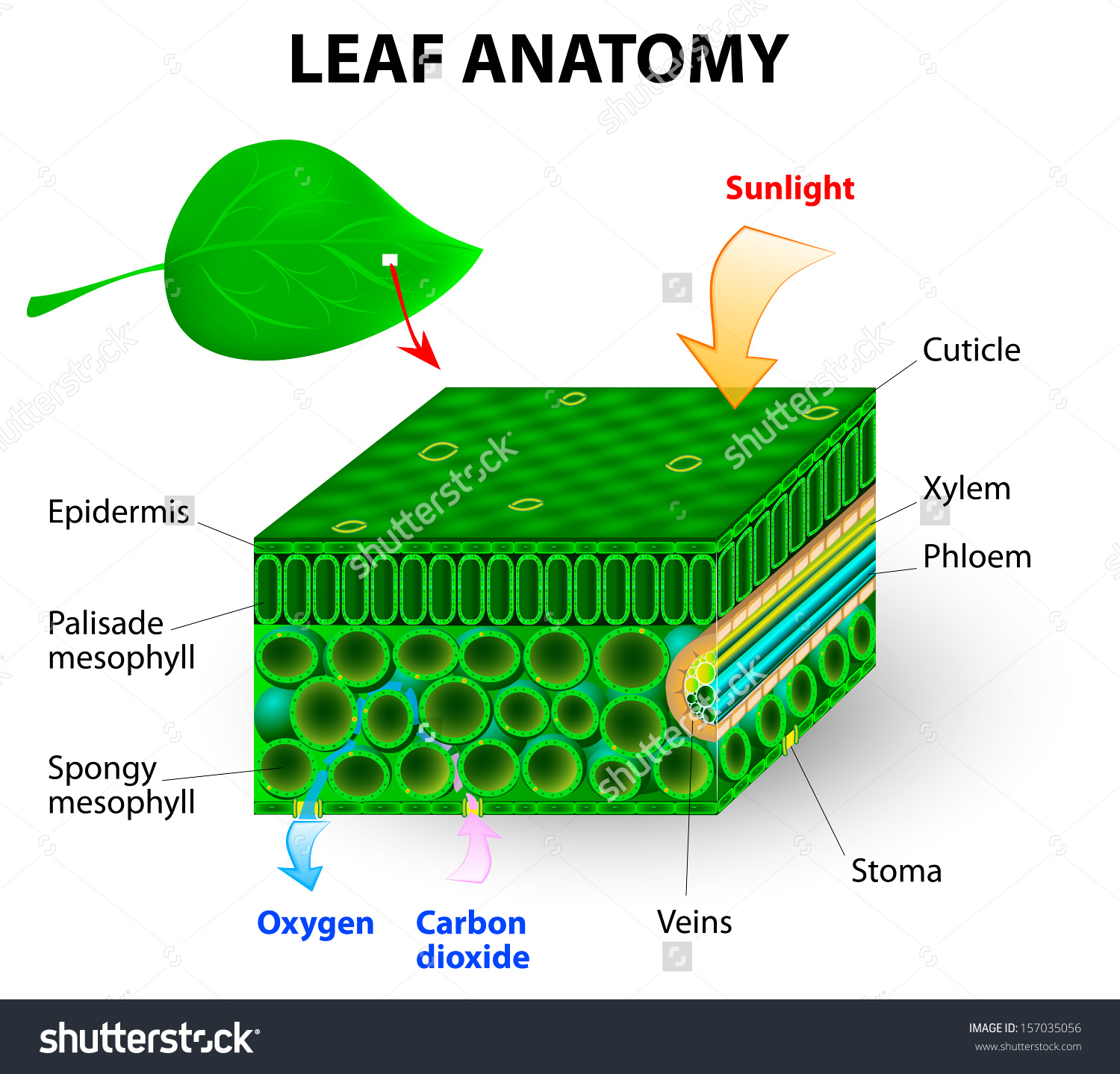
Leaf structures clipart 20 free Cliparts Download images on
The air space found between the spongy parenchyma cells allows gaseous exchange between the leaf and the outside atmosphere through the stomata. In aquatic plants, the intercellular spaces in the spongy parenchyma help the leaf float. Both layers of the mesophyll contain many chloroplasts. Figure 30.10. 1: Mesophyll: (a) (top) The central.

Parts of a leaf diagram. Preschool & PreK Science/Sensory
A leaf is a compromise between two conflicting evolutionary pressures. The first is to expose a maximum photosynthetic surface to sunlight; the second is to conserve water while, at the same time, providing for the exchange of gases necessary for photosynthesis. The photosynthetic cells of leaves are of a general type known as parenchyma.
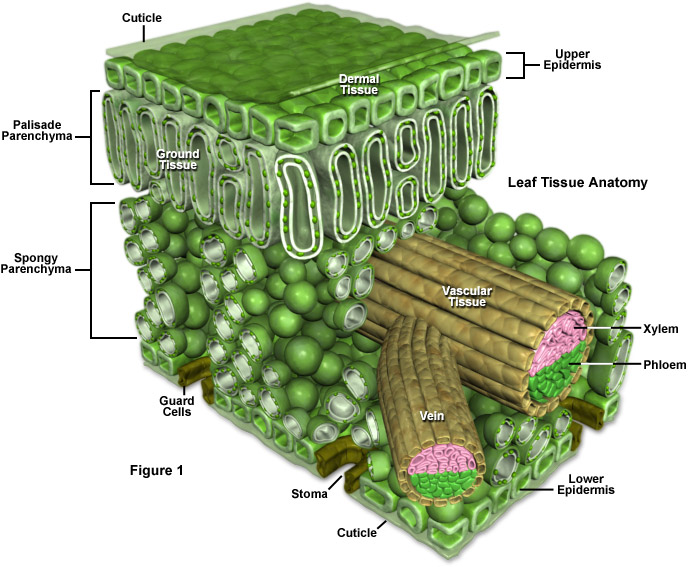
Molecular Expressions Cell Biology Plant Cell Structure Leaf Tissue
Figure 9.3. 2: Cross section of a hydrophytic leaf. Observe a prepared slide of a hydrophyte, such as Nymphaea, commonly called a water lily. Note the thin epidermal layer and the absence of stomata in the lower epidermis. In the spongy mesophyll, there are large pockets where air can be trapped.
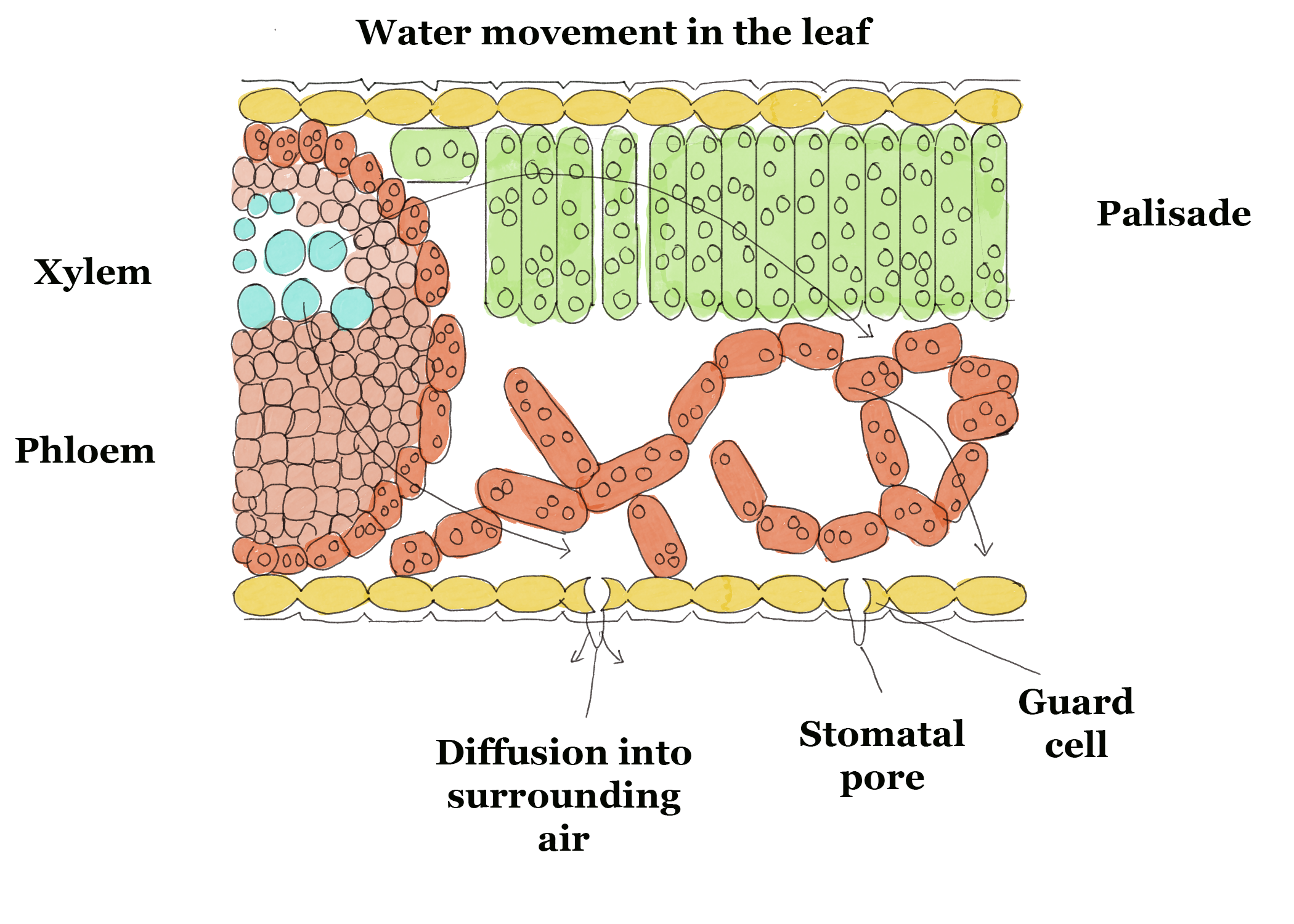
Leaf Structure, Types, Functions GCSE Biology Revision
The palisade mesophyll cells are packed tightly together near the top of the leaf to collect as much sunlight as possible. They contain many chloroplasts and most photosynthesis takes place in these cells. The spongy mesophyll cells contain air spaces to allow the movement of gases (i.e. carbon dioxide and oxygen) throughout the leaf. The guard.

Leaf Labelled Stock Photo Download Image Now iStock
GCSE WJEC Structure of plants - WJEC Leaf structure Plants adapt in order to efficiently collect raw materials required for photosynthesis. These raw materials must be transported through the.

Plant leaf structure, illustration Stock Image C023/3022 Science
[Figure1] Epidermis covers the upper and lower surfaces of the leaf. Usually a single layer of tightly-packed cells, the epidermis mediates exchanges between the plant and its environment, limiting water loss, controlling gas exchange, transmitting sunlight for photosynthesis, and discouraging herbivores.
/parts_of_a_leaf-56abaed23df78cf772b5625a.jpg)
Plant Leaves and Leaf Anatomy
Like the stem, the leaf contains vascular bundles composed of xylem and phloem (Figure 3.4.2.6 − 7 3.4.2. 6 − 7 ). When a typical stem vascular bundle (which has xylem internal to the phloem) enters the leaf, xylem usually faces upwards, whereas phloem faces downwards. The conducting cells of the xylem (tracheids and vessel elements.
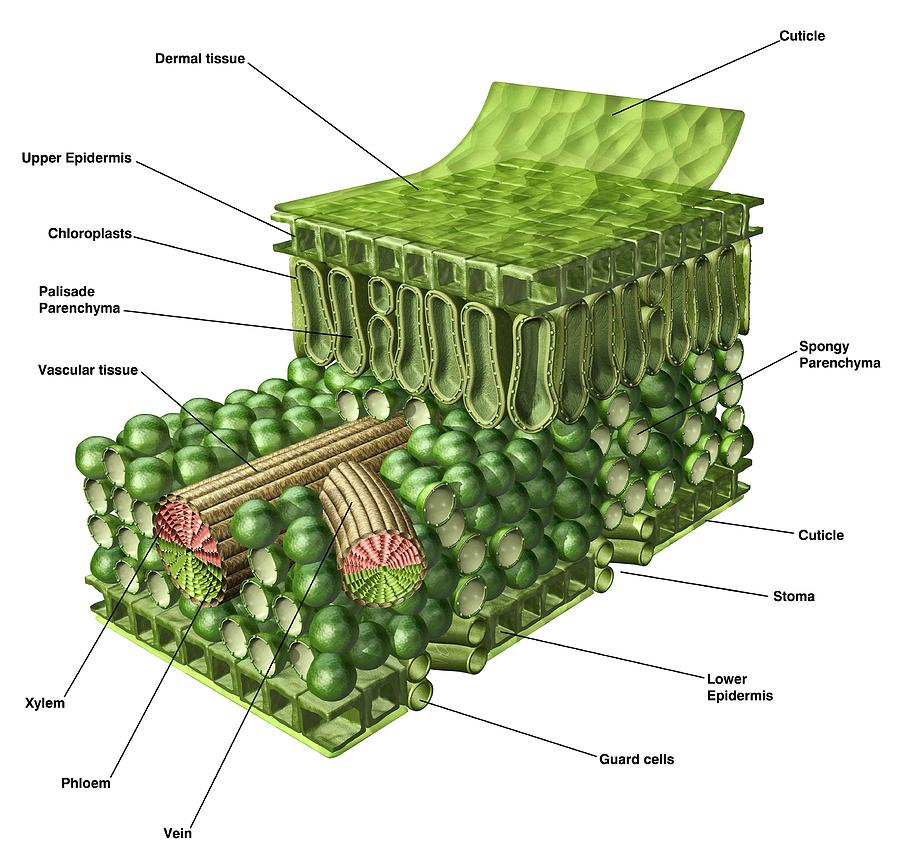
Plant Leaf Structure Photograph by Carlos Clarivan Fine Art America
Parts of a Leaf Diagram 1. Petiole It is the stalk that connects a leaf to the stem of the plant, it is made of complex conducting tissues called vascular tissues. Functions Providing support to the leaf and keeps it erect Transporting water and nutrients absorbed by the roots to the leaves
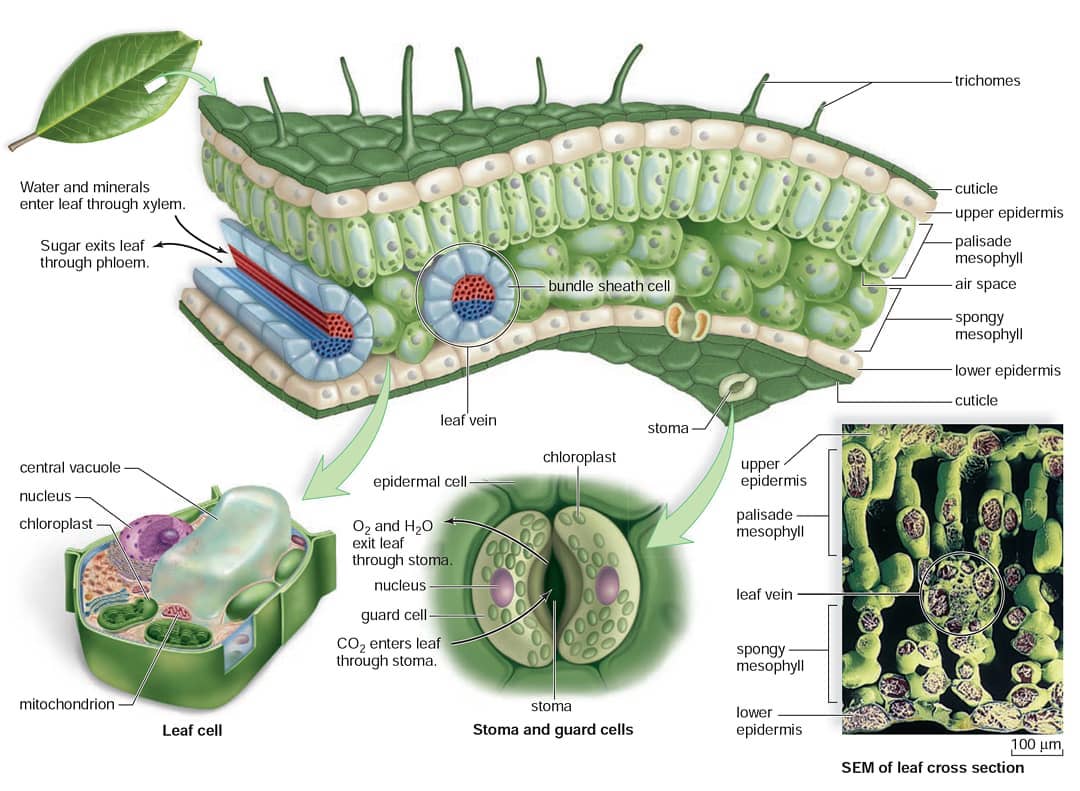
Structure of a leaf
The structure of a leaf is described below in detail : Parts of a Leaf. Generally, leaf base, petiole, and lamina, together form the main parts of a leaf. Leaf Base: This is the part where a leaf attaches to the stem. Leaf base has two small leaf-like structure called stipules.

Leaf Structure & Evolution Digital Atlas of Ancient Life
Figure 30.8.1 30.8. 1: Parts of a leaf: A leaf may seem simple in appearance, but it is a highly-efficient structure. Petioles, stipules, veins, and a midrib are all essential structures of a leaf. Within each leaf, the vascular tissue forms veins. The arrangement of veins in a leaf is called the venation pattern.
leaf structure Labelled diagram
Structure of a Leaf In this module, you will: learn about the structure of a leaf.Leaves come in many shapes and sizes. This video walks through the major in.
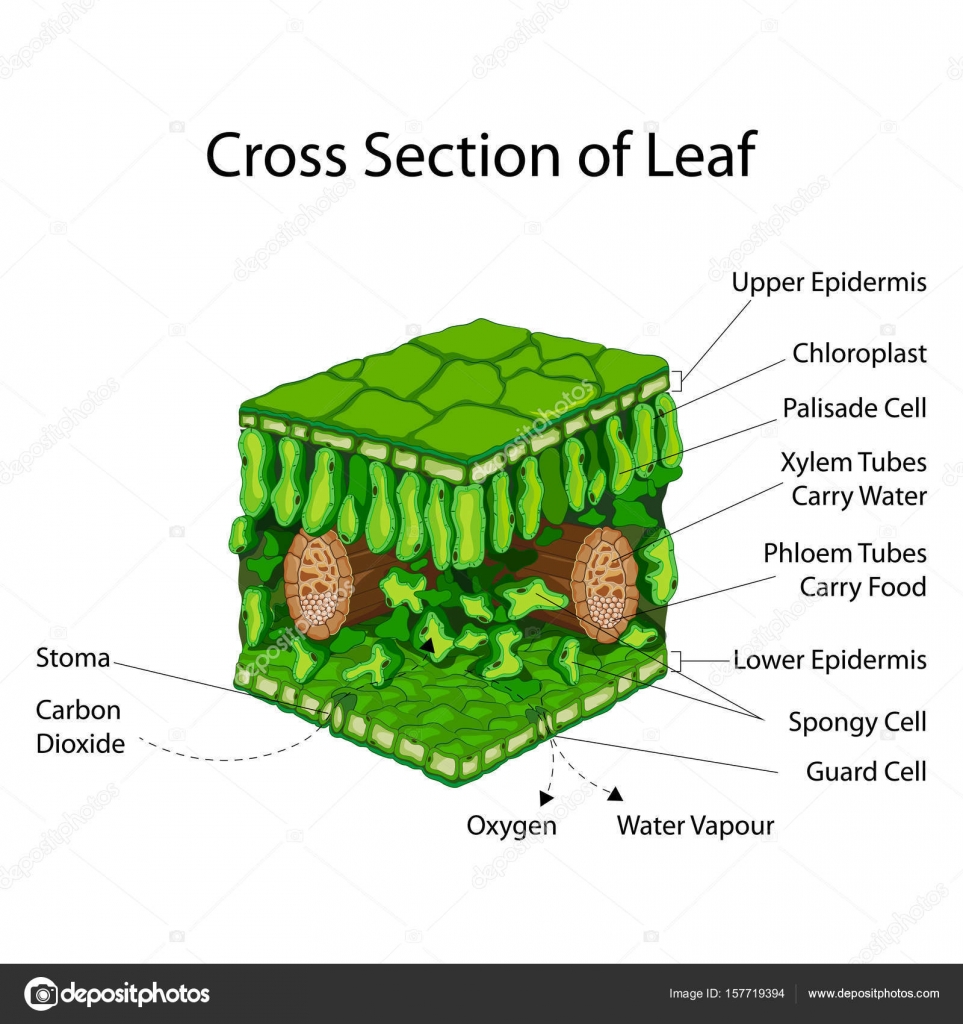
Cross Section Of Leaf Diagram Class 10 Ncert Class X Science / Cross
The midrib contains the main vein (primary vein) of the leaf as well as supportive ground tissue (collenchyma or sclerenchyma). Figure 3.4.1. 1: A typical eudicot leaf. Many leaves consist of a stalk-like petiole and a wide, flat blade (lamina). The midrib extends from the petiole to the leaf tip and contains the main vein.

Labeled Diagram Of A Leaf hubpages
The table below describes the different structures in a leaf and their functions; Leaf Structures Table. Diagram showing the cross-section of a leaf. The specialised cells in leaves have adaptive features which allow them to carry out a particular function in the plant;. 6.2.3 Structure of the Leaf; 6.2.4 Living in Extreme Conditions;

Ts Of Dicot Leaf Diagram Amyhj
Internal Structure of Leaf (With Diagram) Article Shared by ADVERTISEMENTS: In this article, we propose to discuss about the internal structure of leaf. The foliage leaves are characterised by green colour, thinness and flatness. They develop as protrusions from the shoot apex and are organs of limited growth.